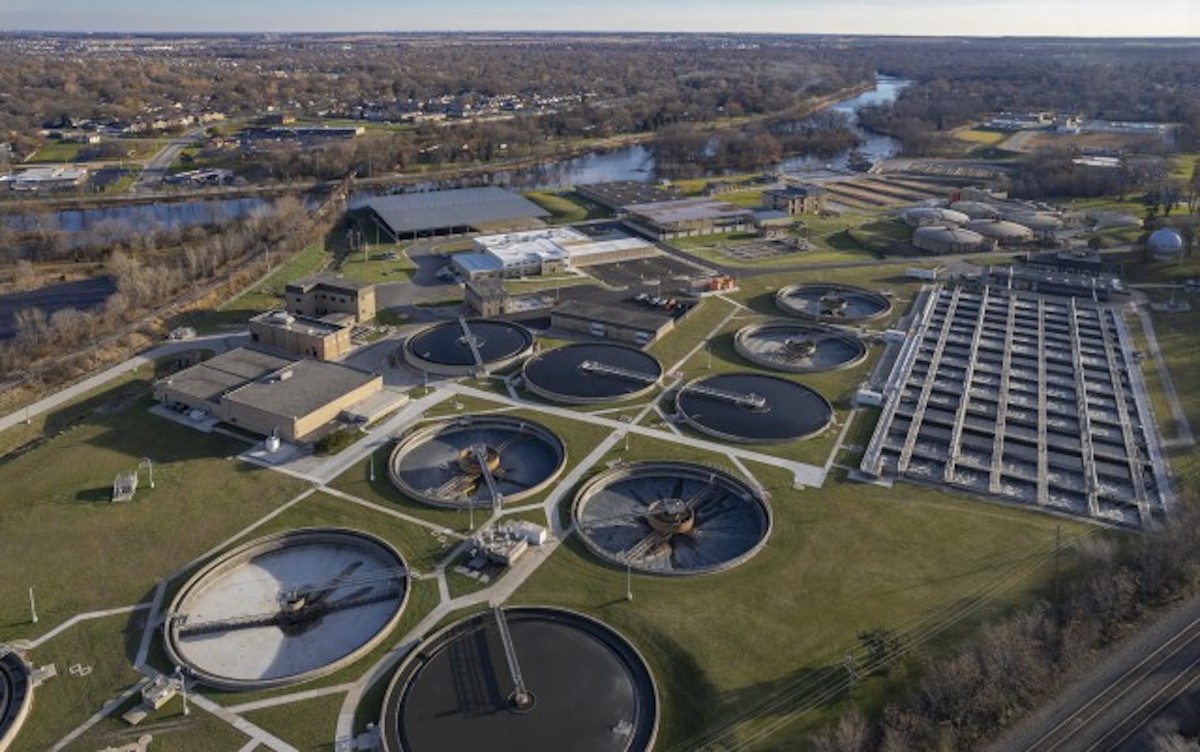Calculating wastewater treatment plant construction costs
When building a wastewater treatment plant (WWTP), municipal leaders are often baffled by their options and associated costs. To get started, they can estimate wastewater treatment plant construction costs at three increasingly granular levels.
- First-order costs: All construction costs for complete treatment plants.
- Second-order costs: Costs for specific unit processes, such as chlorination and clarifiers.
- Third-order costs: The cost for unit process components, such as electrical, instrumentation and excavation.
In short, when estimating, you can compare costs on a plant-to-plant level, a process-to-process level and a component-to-component level. This allows you to get a general idea of costs or to refine your estimate based on the processes and components your plant will use.
Below, we discuss what factors contribute to wastewater treatment plant construction costs and how partnering with a wastewater engineering expert can help reduce costs.
Factors contributing to wastewater treatment plant construction costs
Wastewater treatment plant construction costs are site-specific and influenced by a range of factors, such as location, size, project type, and cost of labor and materials. However, the following costs will play a role in any WWTP construction estimate.
Capacity and effluent quality standards
With an increase in population in urban and semi-urban areas, WWTPs struggle to accommodate increased effluent volumes. Larger communities require higher-capacity plants, which cost more to construct and operate.
Generally, it costs $12 million for each million gallons per day (MGD) of average flow. You can also base estimates on flows during peak hours at a rate of around $5 million per MGD. However, these numbers only provide a rough estimate and are not accurate for small communities (fewer than 500 residents) or large ones (more than 500,000 residents).
Regulatory effluent quality standards also affect costs, as does site effluent quality. Meeting stringent standards can cost more. Similarly, industrial effluent will often require more expensive treatment capabilities.
Site cleanup costs
To keep land costs low, municipalities often build WWTPs on former dumping or disposal sites. Construction at these locations comes with contamination risks, like from underground storage tanks. As a result, unforeseen site cleanup costs can creep up on a project and throw off the budget.
Equipment
Effluent quality and local discharge regulations determine what equipment a WWTP needs. For example, effluent discharge containing suspended solids, metals, oils or grease requires pH stabilization and metal removal through primary and secondary clarifiers. Removing biological contaminants in wastewater involves specific technologies and equipment, including fixed film, activated sludge, clarifiers, membrane bioreactors and dissolved air flotation.
Additionally, automated operations at some WWTPs require technological equipment for remote monitoring, predictive maintenance systems, analytics software and cybersecurity.
Sequencing
Building a wastewater collection system on a greenfield site is usually less expensive than upgrading a treatment plant. This is because a treatment plant must continue treating sewage throughout the upgrade. To prevent service interruptions, construction must be done in a specific order and on a tighter timeline. This puts additional constraints on contractors. They may also need to introduce temporary treatment methods during construction to maintain the treatment standards, which complicates the design.
Labor
Construction labor is an integral part of the overall budget for WWTP construction and is dictated by the location and broader economic conditions. While construction labor is a short-term cost, long-term labor costs for operation and maintenance are a major component in a WWTP's budget.
Materials
Construction materials affect the overall cost of constructing a WWTP. Influent characteristics play a large role in determining which materials are used. For high-flow, high-temperature, corrosive and/or concentrated wastewater, high-quality stainless steel pipes are more durable than inexpensive cast iron or painted carbon steel pipes. PVC pipes can also be a reasonable compromise due to its corrosion resistance. However, it will not perform as well with high-temperature wastewater. An initial upfront investment in durable materials can also reduce post-construction costs for maintenance, repair and replacement.
Regulatory costs
Construction work also includes regulatory costs, such as obtaining permits, complying with discharge limits and on-site compliance inspections.
In addition to these factors, trade-offs between capital and operational costs play a crucial role in construction and upgrade budgets.
Capital versus operational costs
The decision-making process for constructing a treatment plant is not straightforward. Municipal leaders need to consider the two broad categories of costs associated with WWTPs.
Capital costs include:
- Unit construction.
- Treatment units and equipment, such as:
- Equalization basins.
- Oil-water separators.
- Primary clarifiers.
- Secondary clarifiers.
- Ultrafiltration units.
- Reverse osmosis units.
- Gravity filters.
- Micro screens.
- Land costs.
- Engineering.
- Administration.
- Contingencies.
Operations and maintenance costs include:
- Energy (power demand).
- Materials.
- Chemicals.
- Labor.
- Transportation of sludges for final disposal.
- Treated wastewater discharge.
Some WWTP construction costs, such as building tanks and other bare-bones requirements, are fixed. However, a municipality has the flexibility to prioritize upfront capital costs over ongoing operations and maintenance, or vice versa.
Often, effluent type and quality influence this choice. For example, fiber-reinforced plastic tanks will cost more than concrete but can better handle industrial effluent with wide pH ranges. In addition, some treatment processes require expensive equipment but have lower operational overhead.
Automation introduces major trade-offs between capital and operations costs. An automated plant requires a large upfront investment but can operate with less staff. However, maintaining automated plants requires maintenance staff with specialized skills to handle equipment downtimes.
The average cost of WWTP construction varies depending on the time of year and the economic conditions at the bid time. Whether balancing operational and capital costs, solving tricky sequencing problems or finding cost-efficient ways to meet effluent standards, partnering with a trusted team of wastewater engineers can help municipal leaders make the right decision for their communities.
How can Fehr Graham help reduce wastewater treatment plant construction costs?
At Fehr Graham, our team has decades of experience evaluating, planning and designing wastewater treatment solutions for communities across the U.S. This expertise, along with a proactive approach, has helped municipal leaders understand their options and reduce wastewater treatment plant construction costs by:
- Integrating design and operations teams. Communication between the design and operations teams ensures we build everything you need — and nothing you don't. When design teams understand operational demands, they can simplify plans and eliminate nonfunctional infrastructure from the design. After construction, our on-site operations team helps municipalities keep day-to-day operations cost-effective.
- Gathering data to help municipalities make informed decisions. When it comes to a community's economic situation and budget, municipal leaders know best. The Fehr Graham team provides valuable data and insights to help them understand all alternatives associated with WWTP design and construction. Then, community leaders can decide what's right for themselves.
For example, a community with high phosphorus levels has several options. Enhanced biological phosphorus removal is capital-intensive while chemical phosphorus removal has higher operations costs. Fehr Graham will provide detailed information about phosphorus removal options, including the effect on ratepayers. Municipal leaders can then deliberate and decide the best option. Similarly, we suggest specific technologies and treatment methods, such as integrated fixed-film activated sludge or mechanical primary filtration, which can lower costs and increase energy efficiency.
No matter how carefully you plan the costs, wastewater treatment infrastructure is a major investment. We know municipalities face funding gaps when building or upgrading wastewater infrastructure. That is why we go beyond consulting on design, construction and operations. We also help municipalities find funding to construct WWTPs in their communities.
To learn more about how Fehr Graham can help calculate and reduce wastewater treatment plant construction costs for your community, contact us or call 271.352.7688
Collaborative, Insightful, Results-Driven Solutions
Fehr Graham provides innovative engineering and environmental solutions to help improve the lives and communities of our customers.


